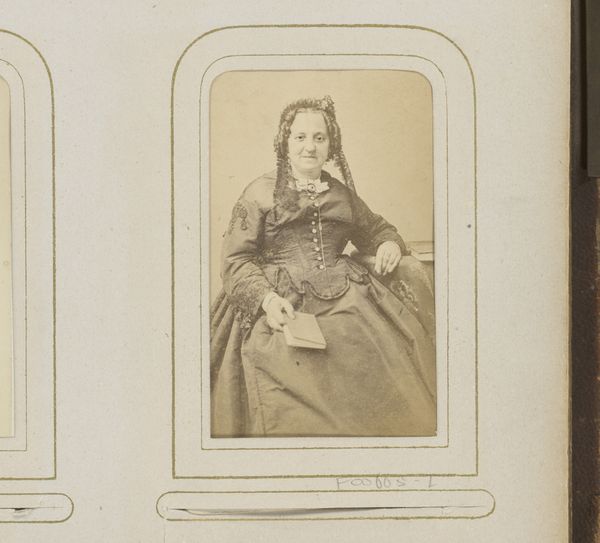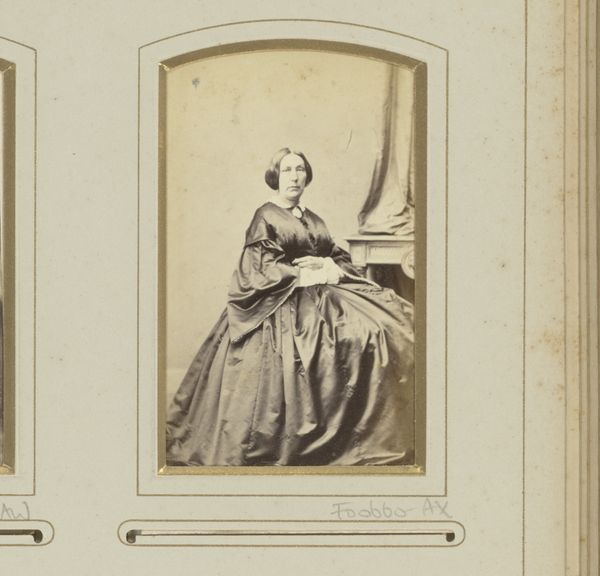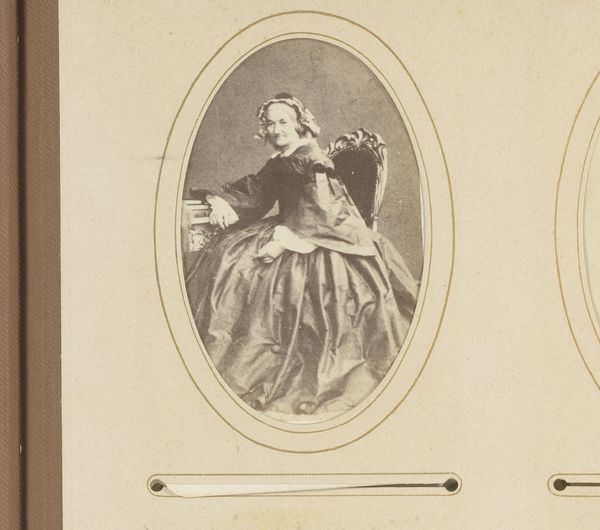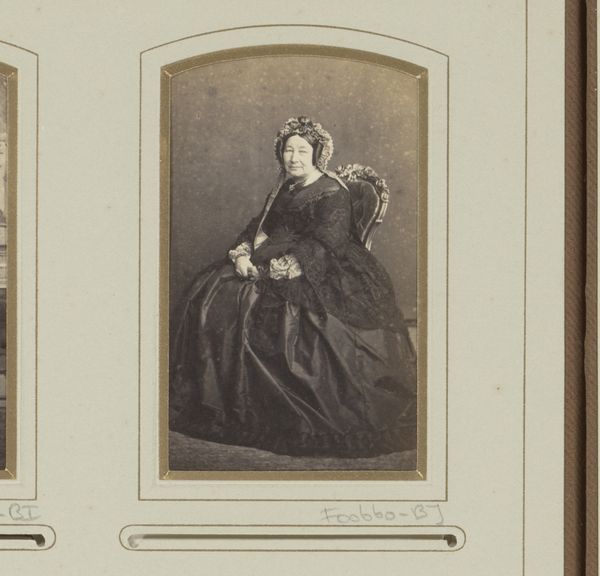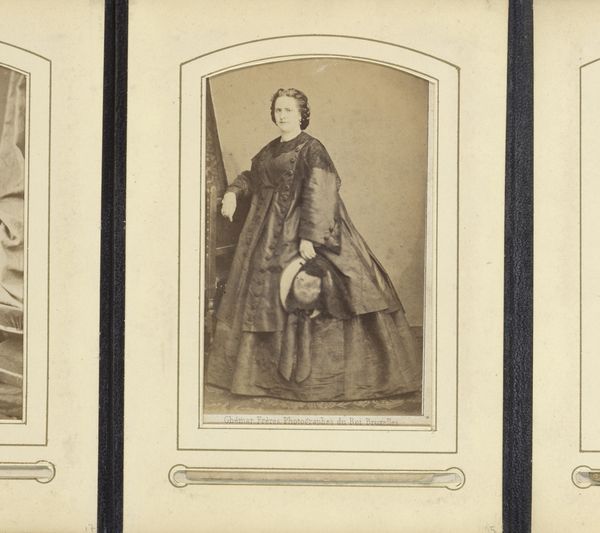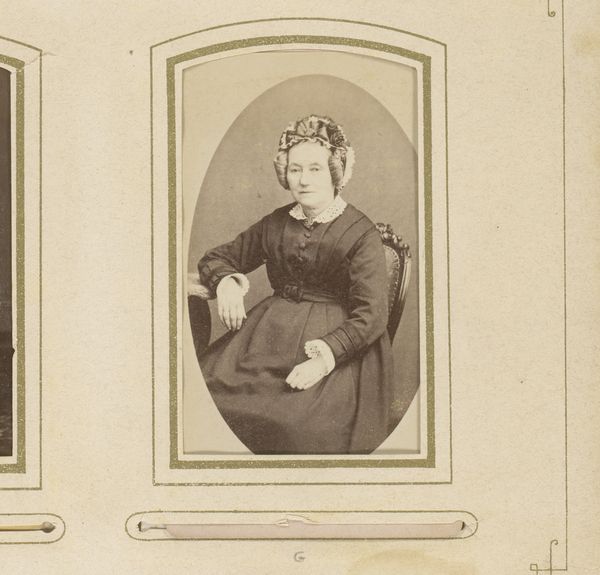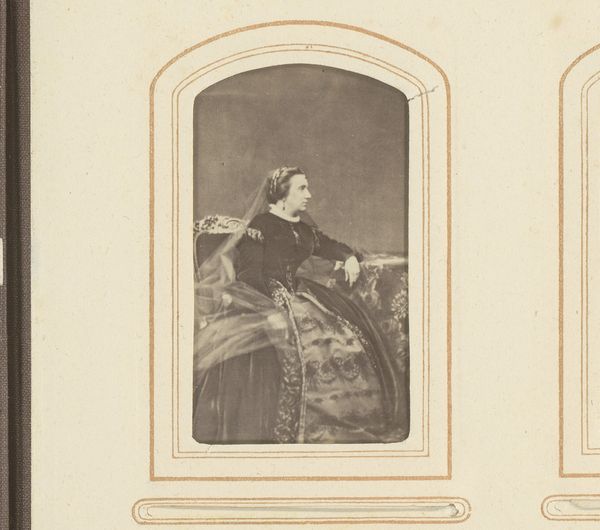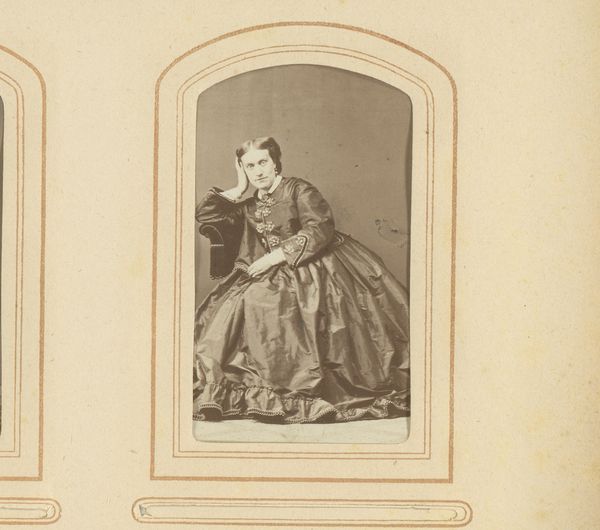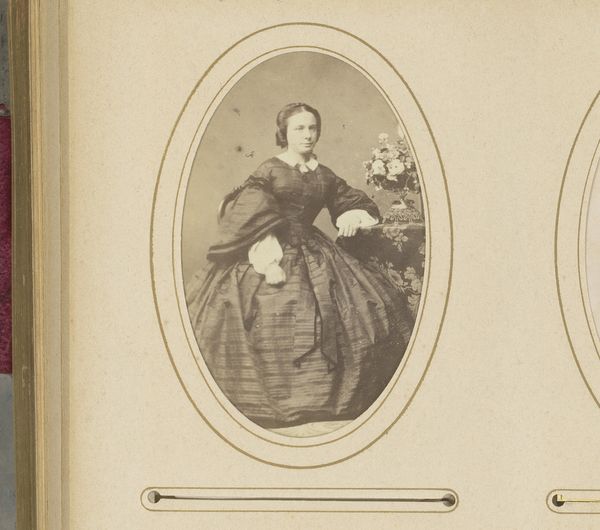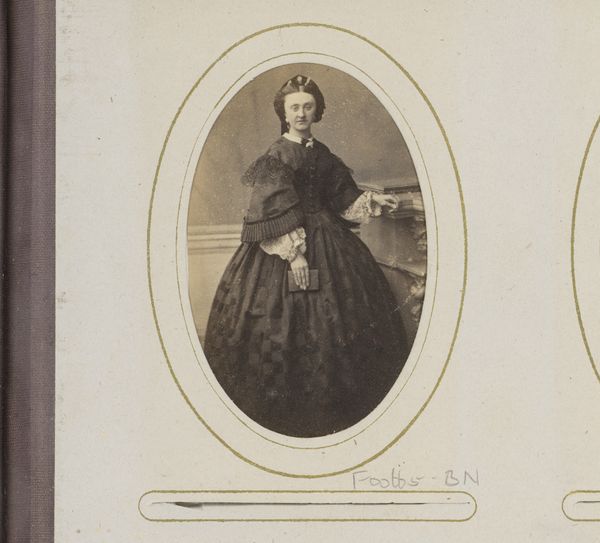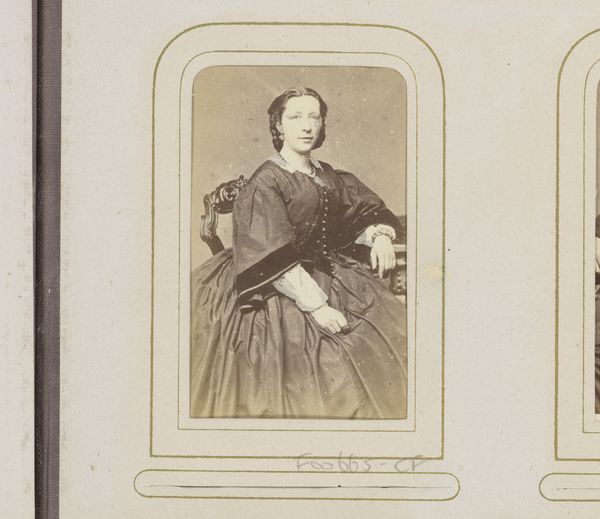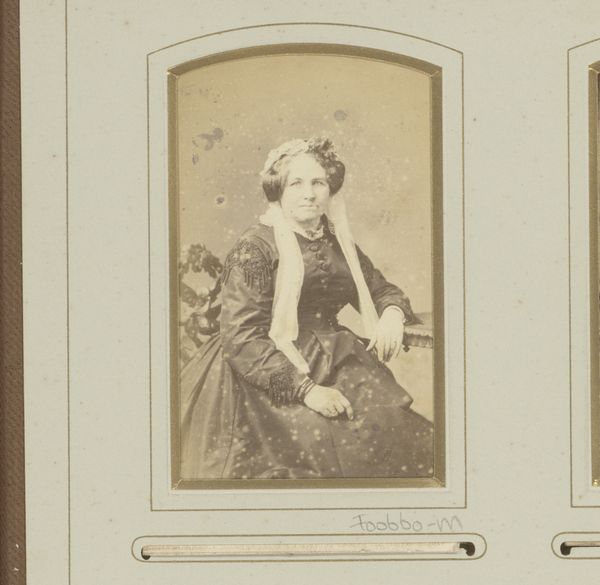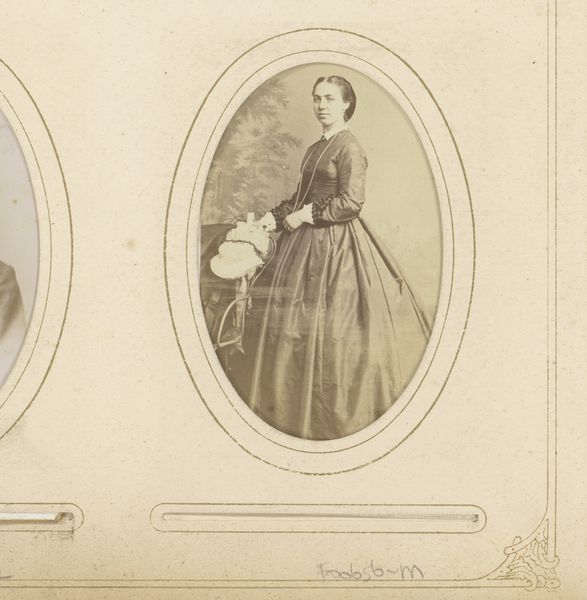
Dimensions: height 84 mm, width 51 mm
Copyright: Rijks Museum: Open Domain
Editor: This is Joseph Dupont's "Portret van een staande jonge vrouw, leunend op een kast," an albumen print dating roughly from 1853 to 1880. The formality of the pose strikes me; it feels staged, almost theatrical. What stands out to you? Curator: Consider the material reality of this image. The albumen print, a laborious process involving coating paper with egg whites and silver nitrate, speaks volumes about 19th-century photographic production. The woman's dark dress likely signifies her wealth and social standing. Can you imagine the labor involved in constructing such an elaborate garment, compared to creating and viewing the portrait? Editor: Absolutely. I guess I was focusing too much on the sitter's expression and overlooking the broader context of how the photograph came to be. Curator: The photographic process itself democratized portraiture to a certain extent, making images accessible beyond the wealthy elite. Yet, this access remained filtered through the lenses of photographers and constrained by materials like the rare metals in the equipment and albumen, revealing complex systems of production and value. Do you see any tensions arising from that juxtaposition here? Editor: Yes, definitely. The ornate dress, juxtaposed with what you pointed out to be the rather accessible process of making an albumen print... I think that contrast becomes really interesting now. It highlights how photography, even then, was navigating these boundaries of class and access to visual representation. Curator: Exactly. Focusing on the materiality of the image gives us insight not just into its creation, but also into the social and economic structures that shaped it, from labor practices to consumption patterns. Editor: It's shifted my entire understanding of this image, really. I initially saw a posed portrait, but now I see a complex product of social forces and material processes. Thanks for drawing that to my attention. Curator: It’s a pleasure to unpack these layers. It is in the intersection of technique and socio-economic conditions where photography’s most relevant contributions often lie.
Comments
No comments
Be the first to comment and join the conversation on the ultimate creative platform.
